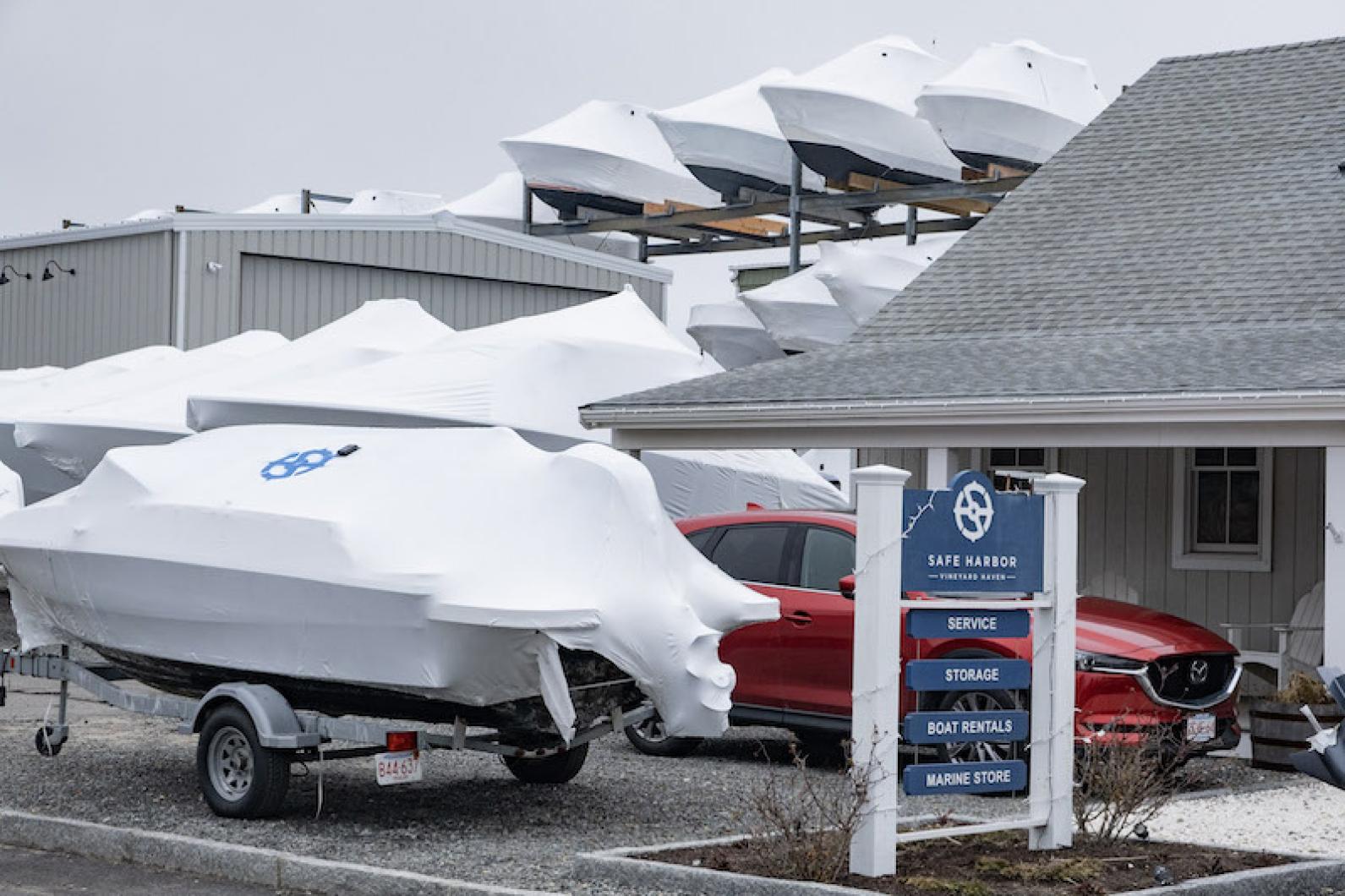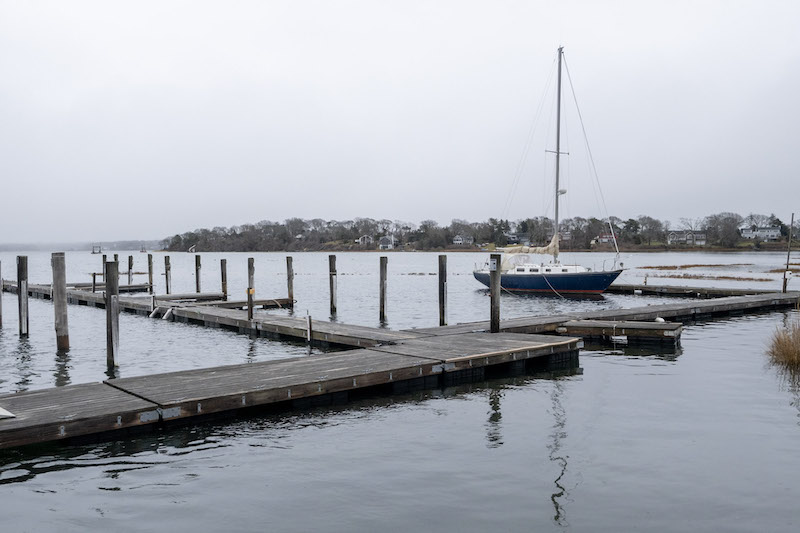Nearly a year after its referral to the Martha’s Vineyard Commission as a development of regional impact (DRI), Safe Harbor Marinas’ plan to expand its Vineyard Haven facility on Lagoon Pond received commission approval in a 9-3 vote Thursday.
Chair Joan Malkin, Trip Barnes, Kathy Newman, Kate Putnam, Doug Sederholm, Ernest Thomas, Fred Hancock, Brian Smith and R. Peter Wharton voted in the majority, with Ben Robinson, Jay Grossman and Jeff Agnoli of Edgartown opposed.
The vote came well after 10 p.m., following video-conferenced deliberations that grew testy as the night wore on and drew repeated requests for decorum from Ms. Malkin.
“Organize yourselves and stop yelling at each other,” she said at one point, as Mr. Robinson and Mr. Hancock raised their voices in argument.
Ms. Malkin had to step in again minutes later as the two men clashed once more, after Mr. Robinson argued for a finding that the marina is not appropriate for its location.
“I’m cautioning this body to not slough off the tremendous amount of testimony that we heard, not just from abutters that live on the lagoon but water quality experts, that this has an impact on water quality,” Mr. Robinson said.
“Well, thank you for thinking we’re all sloughing off the concerns of the rest of the Island,” Mr. Hancock replied, as Ms. Malkin’s calls for order went unheard.
Ms. Malkin intervened again, saying to Mr. Robinson: “We are dealing with a pre-existing use. Is the further development of that use appropriate and/or essential at this location? That is the question.”
According to data, the marina — first established as a boatyard just after World War II by Vineyard boat builder Erford Burt — hasn’t shown itself to be a notable polluter, Mr. Sederholm added.
“There is no evidence in the record that they are contributing any more nitrogen to the water than any of the abutters, given their size,” Mr. Sederholm continued, adding that the marina also is not on record as adding to the pond’s bacteria count.
Thursday’s approval came with a list of conditions for Safe Harbor that include installing solar power within two years, providing housing for employees, studying the feasibility of restoring the adjacent marsh and using only copper-free hull paint on boats owned by year-round customers.
Among other stipulations, the marina will conduct a water testing program in the pond, contribute $5,000 to Tisbury’s shellfish seeding program and provide a 10-foot easement along the property edge for the town to create a shared-use path linking Lagoon Pond Road with Beach Road.
MVC approval clears the way for Safe Harbor Marinas, a privately-held company that has acquired more than 130 U.S. marinas — including one in Edgartown — and targets an upscale boating market, to remove old buildings and expand boat storage.
The firm has pledged to give away the marina’s current office building, a relocated church that became Mr. Burt’s boatshop and presently stands on high pilings, if someone can remove and reuse it.
During deliberations Thursday, some commissioners sought to restrict the size of the boats Safe Harbor can store on its expanded racks, pressing for a hull length limit of 35 feet in order to reduce the number of larger vessels using the pond.
“I think it’s important that we set some sort of upper limit,” said Mr. Robinson, adding that 40-foot boats can carry as many as five outboard engines.
“This is a fragile part of the lagoon [and] boats cause pollution,” he said.
Mr. Agnoli supported a 35-foot limit as well, citing public testimony from last year’s hearings and correspondence.
“We heard a lot of negative comments about this expansion, and this is one way I believe we can acknowledge that,” he said.
But the marina already stores and services boats up to 40 feet in length, Safe Harbor representative Charles Guard told commissioners.
“If you limit us to 35 [feet], you would be taking away what we already have as far as storage capacity in our racks,” Mr. Guard said.
“Being restricted to 35 feet... will likely make this financially not feasible,” he said, adding that Safe Harbor does not envision serving boats longer than 40 feet.
Weight, not hull length, determines what vessels can be racked, Mr. Guard added.
A subsequent motion for a 40-foot length limit failed to pass due to a 6-6 tie, with Ms. Malkin, Mr. Agnoli, Mr. Robinson, Mr. Barnes, Mr. Sederholm and Mr. Grossman voting for the motion.
When the expansion is completed, the marina’s rack storage capacity will go from 78 boats to 118. The stored vessels, shrink-wrapped with white plastic in the winter, sparked further disagreement as commissioners discussed the project’s impact on scenic values.
Safe Harbor’s racks are widely visible from neighboring roads such as Skiff avenue, noted Ms. Putnam.
“That’s got to be a detriment,” Mr. Robinson said, but other commissioners disagreed.
“A lot of people like to look at a working waterfront,” Mr. Barnes said. “This is an Island with boats.”
Mr. Smith echoed the sentiment: “That’s who we are, where we are,” he said.








Comments (3)
Comments
Comment policy »